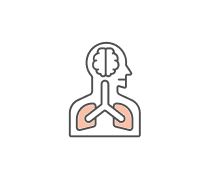Nervous tissue consists predominantly of two cell types, neurons...
Skeletal muscle is described as
Ethnic differences in skin color are primarily caused by differences...
A ___ is an elevated patch of melanized skin.
The shape of a person's external ear is given by
This skin color is most likely to result from anemia.
Bilirubin causes a skin discoloration called
_____________ cells in simple columnar and pseudostratified columnar...
After six months of lifting weights at the gym you notice that some of...
The least common but most deadly type of skin cancer is
The skin discoloration most likely to suggest physical abuse is
The four primary tissue types found in adult organs include all of the...
_______________ lines body cavities, covers the body surface, and...
__________________ is found in the heart, and one of its functions is...
The fastest rate of mitosis happens in the
The hypodermis usually has an abundance of this tissue.
All cells in this tissue reach the basement membrane and only cells...
__________________ epithelium is associated with rapid transport of...
These are all types of fibrous connective tissues except
This primary germ layer is the middle layer, called ______, and gives...
The ___ is absent from most epidermis.
The reddish color of the skin of the lips is primarily due to this...
The narrow zone of dead skin overhanging the proximal end of a nail is...
Mitosis in the __________ accounts for growth of the nail.
The oil of your scalp is secreted by __________ glands associated with...
_____________ burns involve the epidermis, all of the dermis, and...
The basement membrane is found between
__________________ epithelium found in the bladder resembles...
_______________ epithelium provides a moist and slippery surface and...
New triglycerides are constantly synthesized and stored and others are...
Macrophages __________________ in the healing of a skin wound.
The replacement of damaged tissue with scar tissue is called
Which of the following are associated with the sense of touch?
These cells stand guard against toxins, microbes and other...
Variations in hair color arise from the relative amounts of
The cutaneous glands concerned with cooling the body are
Fingerprints left on things we touch are associated with
A hair cycle consists of three developmental stages in the following...
Collagenous fibers are very abundant in
The skin does not include
A pilus is
The contraction of the piloerector muscles (pilomotor muscle or...
An epithelium with all cells tall and narrow and with every cell...
This layer of the epidermis consists of up to 30 layers of dead...
Fibroblasts and protein fibers are associated with both
Blood vessels in the _________ provide a hair with its sole source of...
A connective tissue fiber refers to a(n) __________________, a nerve...
________________ epithelium is the most widespread epithelium in the...
These are all types of cells found in the epidermis except
The _______________ gives rise to the _______________.
The membrane that lines digestive, respiratory, urinary, and...
Secretions from __________ glands contribute to the acid mantle that...
















